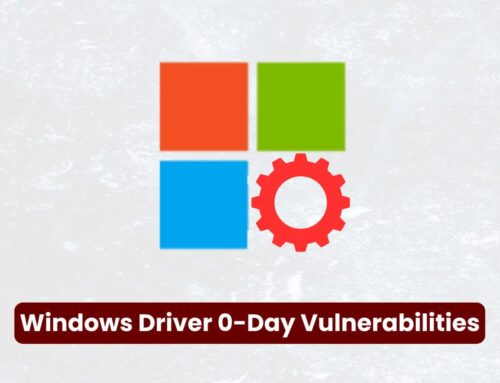
Lenovo IdeaCentre and Yoga Laptop BIOS Vulnerabilities Let Attackers Execute Arbitrary Code
Navigating Critical BIOS Vulnerabilities in Lenovo IdeaCentre and Yoga Laptops
The foundation of any computing system lies in its BIOS (Basic Input/Output System), the firmware that initializes hardware components and launches the operating system. When vulnerabilities surface within this critical layer, the implications are severe, potentially granting attackers unfettered access to a system. Recent disclosures have brought to light significant BIOS vulnerabilities affecting specific Lenovo IdeaCentre and Yoga All-In-One systems, posing substantial risks of arbitrary code execution and sensitive information disclosure.
This analysis, informed by reports from cybersecuritynews.com, delves into these critical flaws, outlining their scope, impact, and, most importantly, the necessary remediation steps for users and IT professionals.
Understanding the Threat: InsydeH2O BIOS and Lenovo Systems
The vulnerabilities in question reside within the InsydeH2O BIOS implementations utilized in a range of specific Lenovo desktop and all-in-one computer models. InsydeH2O is a widely adopted BIOS solution, making flaws within it particularly concerning due to their potential widespread impact across various vendor ecosystems.
These exploits are designed to capitalize on weaknesses that could allow a privileged local attacker to gain unauthorized control. This ‘privileged local’ attacker typically implies someone with existing, albeit limited, access to the system, who then leverages these BIOS vulnerabilities to escalate their privileges and execute malicious code at a much deeper, more persistent level, or steal sensitive system data.
Severity and Scope: CVSS Scores and Affected Models
The Common Vulnerability Scoring System (CVSS) provides a standardized method for assessing the severity of security vulnerabilities. The reported BIOS vulnerabilities in Lenovo systems have garnered CVSS scores ranging from 6.0 to 8.2. These ratings place them firmly in the “High” severity category, indicating that these flaws represent significant risks to system integrity and data confidentiality.
Key Vulnerabilities to Address:
- CVE-2022-40134: A heap overflow vulnerability. CVE-2022-40134
- CVE-2022-40135: A stack overflow vulnerability. CVE-2022-40135
- CVE-2022-40149: An information disclosure vulnerability. CVE-2022-40149
- CVE-2022-40150: A privilege escalation vulnerability. CVE-2022-40150
- CVE-2022-40130: An arbitrary code execution vulnerability. CVE-2022-40130
- CVE-2022-40132: Another arbitrary code execution vulnerability. CVE-2022-40132
The combined impact of these vulnerabilities allows for a multi-faceted attack vector, ranging from gaining control over the system at the firmware level to extracting sensitive data that should otherwise remain secure.
Remediation Actions: Protecting Your Lenovo Systems
Given the critical nature of these BIOS vulnerabilities, immediate action is paramount for all users of affected Lenovo IdeaCentre and Yoga models. The primary and most effective remediation is to update the system’s BIOS/firmware to the latest version provided by Lenovo.
- Identify Your Model: Confirm if your specific Lenovo IdeaCentre or Yoga All-In-One model is listed as affected. Lenovo typically provides detailed advisory pages listing all impacted systems.
- Check Current BIOS Version: Determine your current BIOS version. This can usually be done through the system information utility in Windows (
msinfo32) or directly in the BIOS setup utility. - Download Latest BIOS Update: Visit the official Lenovo Support website. Navigate to the support page for your specific model and locate the latest BIOS/firmware update available. Ensure you are downloading from the authentic Lenovo site to prevent supply chain attacks.
- Follow Lenovo’s Update Instructions: BIOS updates are sensitive processes. Carefully follow Lenovo’s instructions for flashing the new firmware. Incorrect procedures can render the system unbootable. It’s often recommended to perform this update with a stable power supply (e.g., a fully charged laptop battery or a UPS for desktops).
- Regularly Monitor for Updates: Establish a routine for checking official vendor sites for firmware and driver updates. BIOS vulnerabilities are not uncommon, and proactive patching is the best defense.
Tools for System Health and Security
While direct remediation for these specific BIOS vulnerabilities involves updating the firmware, a holistic approach to system security includes leveraging tools for ongoing monitoring and assessment. Below are some general categories of tools beneficial for maintaining system health and detecting potential anomalies, though they may not directly or solely address BIOS-level vulnerabilities in real time.
| Tool Name | Purpose | Link |
|---|---|---|
| Lenovo Vantage | Provides system health checks, driver updates, and often BIOS update notifications specific to Lenovo devices. | Lenovo Vantage |
| BIOS Update Utilities (Vendor-specific) | Proprietary tools provided by manufacturers (like Lenovo) for safe and guided BIOS flashing. | (Varies by model on Lenovo Support site) |
| Vulnerability Scanners (e.g., Nessus, OpenVAS) | Network and system-level scanners that can identify known vulnerabilities in operating systems, applications, and sometimes firmware versions if detectable remotely. | Tenable Nessus / OpenVAS |
| System Information Tools (Built-in OS) | Helps identify current BIOS version, hardware specifications, and system configurations. | (Standard: Windows System Information (msinfo32), Linux: dmidecode) |
Conclusion: Proactive Security in a Vulnerable Landscape
The discovery of critical BIOS vulnerabilities in Lenovo IdeaCentre and Yoga systems underscores the persistent and evolving threat landscape. Firmware-level vulnerabilities are particularly dangerous as they operate beneath the operating system, making them difficult to detect and often providing persistent footholds for attackers. The high CVSS scores associated with these flaws serve as a stark reminder of their potential impact, ranging from arbitrary code execution to sensitive data compromise.
For IT professionals and individual users alike, the clear path forward is proactive patching. Ensuring that BIOS firmware is kept up-to-date is as crucial as applying operating system and application security patches. This vigilance, combined with a broader security posture that includes robust antivirus solutions and network monitoring, is essential to mitigate the risks posed by such fundamental system vulnerabilities.





